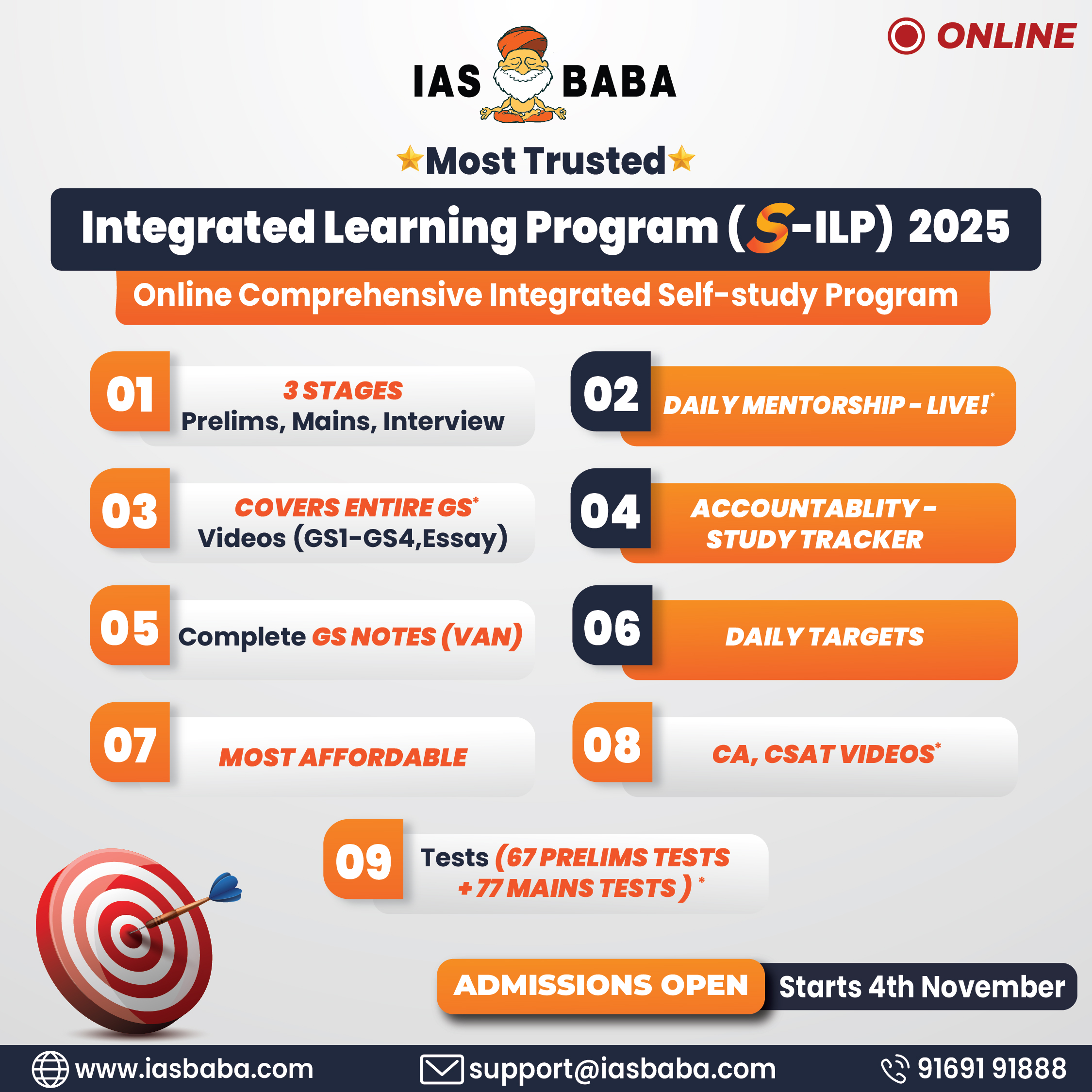IASbaba's Daily Current Affairs Analysis, IASbaba's Daily Current Affairs June 2017, IASbaba's Daily News Analysis, National, UPSC
IASbaba’s Daily Current Affairs – 24th June 2017
Archives
NATIONAL
TOPIC:
General Studies 1
-
Poverty and developmental issues, urbanization, their problems and their remedies
General Studies 2
-
Government policies and interventions for development in various sectors and issues arising out of their design and implementation.
-
Issues relating to poverty and hunger.
Urban agriculture: Building food-smart cities
Introduction:
By 2030, it is projected that 60 per cent of the population in developing countries will live in cities. Cities have a strategic role to play in developing sustainable food systems and promoting healthy diets. As India progresses towards a rapid phase of urbanisation, attempts are being made to build urban agricultural systems.
About Urban agriculture:
-
Urban agriculture, urban farming, or urban gardening is the practice of cultivating, processing, and distributing food in or around a village, town, or city. Urban agriculture can also involve animal husbandry, aquaculture, agroforestry, urban beekeeping, and horticulture.
-
Urban agriculture can be practised on private land such as terraces or backyards of residences, on public land such as parks, conservation areas, along the roads, streams and railway lines and on semi-public land such as schoolyards and grounds of educational and health facilities.
-
Urban agriculture uses resources such as organic waste as compost and waste water for irrigation.
-
Community gardens, farms in city blocks, vertical farms based on hydroponics or aeroponics and aquaculture are some smart urban agriculture models.
Challenges in feeding cities:
-
Resource scarcity, Unsustainable production and consumption patterns, and food loss and waste.
-
Climate change: The conventional system requires trucks to crisscross the country delivering food, while releasing greenhouse gases. Rural farms can also require clearing huge swaths of forest land for crops.
-
Rapid urbanisation in the developing world is accompanied by a rapid increase in urban poverty and urban food insecurity. This scenario is worsened by food inflation, now a global phenomenon, and one that is likely to continue.
-
For the urban poor, expenses on food comprise a large share of their total expenditure, but they are mostly dependent on the vagaries of informal employment
-
The International Food Policy Research Institute’s 2017 Global Food Policy Report highlights how rapid urbanisation brings unique challenges to rural and urban areas, and strong linkages between these sectors can help achieve SDG-2 (end hunger, achieve food security and improved nutrition, and promote sustainable agriculture).
-
Urbanisation comes with challenges to agriculture and nutrition. Higher urban incomes are associated with a dietary transition to more animal-sourced food, fats and oil, refined grains, and fruits and vegetables, which requires more intensive use of natural resources. Urban lifestyles tend to increase consumption of processed foods and the urban poor are often limited to cheap unhealthy foods. At the same time, as urban population grows, hunger and under-nutrition will also increase in urban areas.
Urban agriculture as the solution:
-
Bringing agriculture into cities can lower food-related greenhouse gas emissions.
-
The practice could provide city residents easier access to fresh produce. Consumers, especially the urban poor, can enjoy access to fresh produce at better prices.
-
Providing access to healthy foods in neighborhoods that lack it, as well as economic stimulation, community engagement, and significant reductions in greenhouse gas emissions.
-
The practice of urban agriculture promotes economic development through food production, builds social capital, community well-being and civic engagement.
-
Urban agriculture can be a sustainable strategy to reduce urban poverty, food insecurity and enhance urban environmental management.
-
It contributes to poverty alleviation, social inclusion of the poor, women empowerment, productive use of vacant plots and reuse of urban waste.
-
Urban growers can sell directly by avoiding intermediaries and spend less time on transport, packaging and storage.
-
Further, urban agriculture can create employment opportunities for disadvantaged groups.
-
Apart from the benefits to the economy, urban agriculture stimulates the development of related micro-enterprises.
-
Greater access to produce could help improve the diet of city residents, and replacing pavement with soil could help abate water runoff, for example.
The importance of urban agriculture is also being recognised by various organisations such as the United Nations-Habitat and FAO (Food and Agriculture Organisation).
Challenges:
-
Inattentiveness in practising urban agriculture may cause health and environmental risks such as use of contaminated land, inappropriate use of pesticides or raw organic manure leaking into water sources.
-
Increasing pollution, and contamination of the city’s waste water with industrial effluents is a major constraint to the continued viability of irrigated farming and aquaculture in urban and peri-urban areas.
-
While city-grown vegetables can have a slightly lower environmental impact than those grown thousands of miles away, horticulture has never been the real problem. It’s not apples and tomatoes that are responsible for most of the diet’s greenhouse gas emissions; it’s animals- meat and dairy products. Thus the focus should not only be on growing vegeatbles.
What needs to be done?
Policy making:
Due to the multi-dimensional nature of urban agriculture, policy development and action planning for it should involve multiple stakeholders from sectors such as agriculture, health, waste management and community development. As being incorporated in urban planning approaches in the United Nation’s Sustainable Cities programme. Urban agriculture policies can consider a combination of social, economic and environmental aspects.
-
From the social angle, subsistence agriculture can form part of the livelihood strategies of urban households.
-
The economic angle is primarily market-oriented urban agriculture, involving small-scale, family-based initiatives and larger-scale entrepreneurial farms, run by private investors or producer associations.
-
The environment management factor lies in nutrient recycling, adoption of agro-ecological production methods, eco-sanitation and waste management.
Incorporating urban agriculture into the policies and systems of every city will play an important role in unleashing its full potential.
Demarcating zones:
-
Cities can facilitate the access to urban spaces by having demarcated zones, similar to Pretoria and Beijing. Making an inventory of the available vacant open land within the city by community mapping or GIS-based data and by analysing its suitability for agriculture will be a good starting point for enhancing access to land for urban farming. Giving short- or medium-term leases to organised groups of urban producers for gardening purposes can also help.
-
Clearly earmarking zones and avoiding unscientific intervention where only urban agriculture suited to local conditions and resource availability is practised can reduce possible health and environmental risks.
Conclusion:
Urban agriculture has the potential to become a vibrant economic sector that quickly adapts to changing conditions and demands, intensifying its productivity and diversifying its functions for the city. Its future will depend on its contributions to the development of a sustainable and resilient city that is inclusive, food-secure, productive and healthy, thus establishing food-smart cities. Urban agriculture, although not a solution to food insecurity, has the potential to provide millions with access to food and nutrition.
Connecting the dots:
-
About 377 million people from India’s total population of 1.21 billion are urban dwellers. With more than 10 million people migrating to cities and towns every year, the total urban population is expected to reach about 600 million by 2031.As. Discuss how with urbanisation the health and nutrition issues of urban residents especially the urban poor is bound to increase. Critically analyze how urban agriculture can be part of the solution to this problem.
NATIONAL
TOPIC: General studies 2
- Parliament and State Legislatures – structure, functioning, conduct of business, powers & privileges and issues arising out of these.
Anti-defection law- Faces a new threat
In news:
After the assembly elections in 2014, a troubling situation has emerged in Andhra Pradesh and Telangana. As of date, 27 legislators are alleged to have defected from various parties to the ruling Telangana Rashtra Samiti (TRS) since 2014. The speaker, S Madhusudhana Chary, himself a member of the TRS, has not taken any decision on the disqualification petitions filed against these MLAs over these three years. Likewise, in Andhra Pradesh, the Telugu Desam Party (TDP) in power has been able to get 21 MLAs from the Yuvajana Shramika Rythu Congress Party (YSRCP) to defect to it, without suffering disqualification. Here too, Speaker Kodela Siva Prasada Rao, a member of the TDP, has taken no decision on the disqualification petitions.
The question that “does the Tenth Schedule, in its present form, strike the right balance between the freedoms of the legislator and the need for respecting democratic mandates and processes?” has emerged again.
A new threat to anti-defection law:
The events in Telangana and Andhra Pradesh show that the anti-defection law faces a new, devastating threat. The speakers in these two states refused to perform their constitutional duties under the law by not taking a decision as to the disqualification of a member of legislative assembly (MLA) within reasonable time. This means that an MLA, who has otherwise violated the Tenth Schedule by “defecting” to another political party, will not suffer the legal consequence of disqualification for such “defection,” but instead will continue to enjoy her seat. This effectively renders the anti-defection law irrelevant. This new modus operandi to defeat the anti-defection law seems to avoid any possible judicial review.
About anti-defection law:
The (Fifty-Second Amendment) Act, 1985 introduced the Tenth Schedule to the Constitution. The ostensible reason for the introduction of the Tenth Schedule was to curb the so-called “aaya-ram-gaya-ram” practices of Indian legislators. The inspiration for this moniker is said to be Gaya Lal, a Haryana MLA who changed parties thrice in the space of one fortnight in 1967 while retaining his seat as an MLA. Defections thereafter reached such epidemic proportions that the stability of some state governments was always in question, distracting from any semblance of good governance. The Tenth Schedule was offered as the solution to this issue. However, In its 32 years of existence, political parties and legislators have come up with creative ways of avoiding the rigours of the law.
Loophole in the law:
Non-Partisan Speaker– By a narrow majority of three to two, a Constitution Bench held in the Kihoto Hollohan case that the Tenth Schedule was largely valid, but read down paragraph 7 which tried to exclude judicial review of the speaker’s decision on disqualification. The minority judgment raised concern about its reliance on the position of the speaker to make an impartial adjudication when the post clearly was a partisan one. Subsequent years have proved the minority judgment right as speakers have only become more partisan.
The speakers’ inaction in both the states is the latest manifestation of the underlying problem highlighted by the minority judgment in the Kihoto Hollohan case—the partisan role of the speaker.
The key question in the above case is whether a high court or the Supreme Court can order the speaker to take a decision on such disqualification petitions.
Fixing the anti-defection law:
It is perhaps time to reconsider the anti-defection law.
-
The anti-defection law should be restricted only to votes on the budget and confidence/no-confidence motions. Simply voting against the party whip should not be a sufficient cause for disqualification.
-
The disqualification in case of defection should be as a matter of course and not involve any discretion or decision-making on the part of the speaker.
-
While the Supreme Court has placed much faith in the neutrality and sanctity of the office of the speaker, the reality is that the office is increasingly becoming partisan. Thus, the role ole of the speaker under the law should be carefully scrutinized.
Conclusion:
The above changes are necessary since what has taken place in Telangana and Andhra Pradesh is probably being watched with interest by political parties around the country. Given that most ideas concerning governance in India, good or bad, have travelled from the states to the centre, the day may not be far when the central government is formed through an illegitimate majority gained only by flagrant violation of the Tenth Schedule.
Connecting the dots:
-
Out of many challenges anti-defection law faces a major one is its reliance on non-partisan role of speaker which increasingly is becoming partisan. Analyze.
Also read: Anti-defection Law- Liberate the legislator
MUST READ
The anonymous addicts
Mandsaur- The farmer’s story
Engaging Pyongyang
India- US and a five point plan
Home truths abroad
A new low
Redraw the line
Lengthening the shadows on the hills











